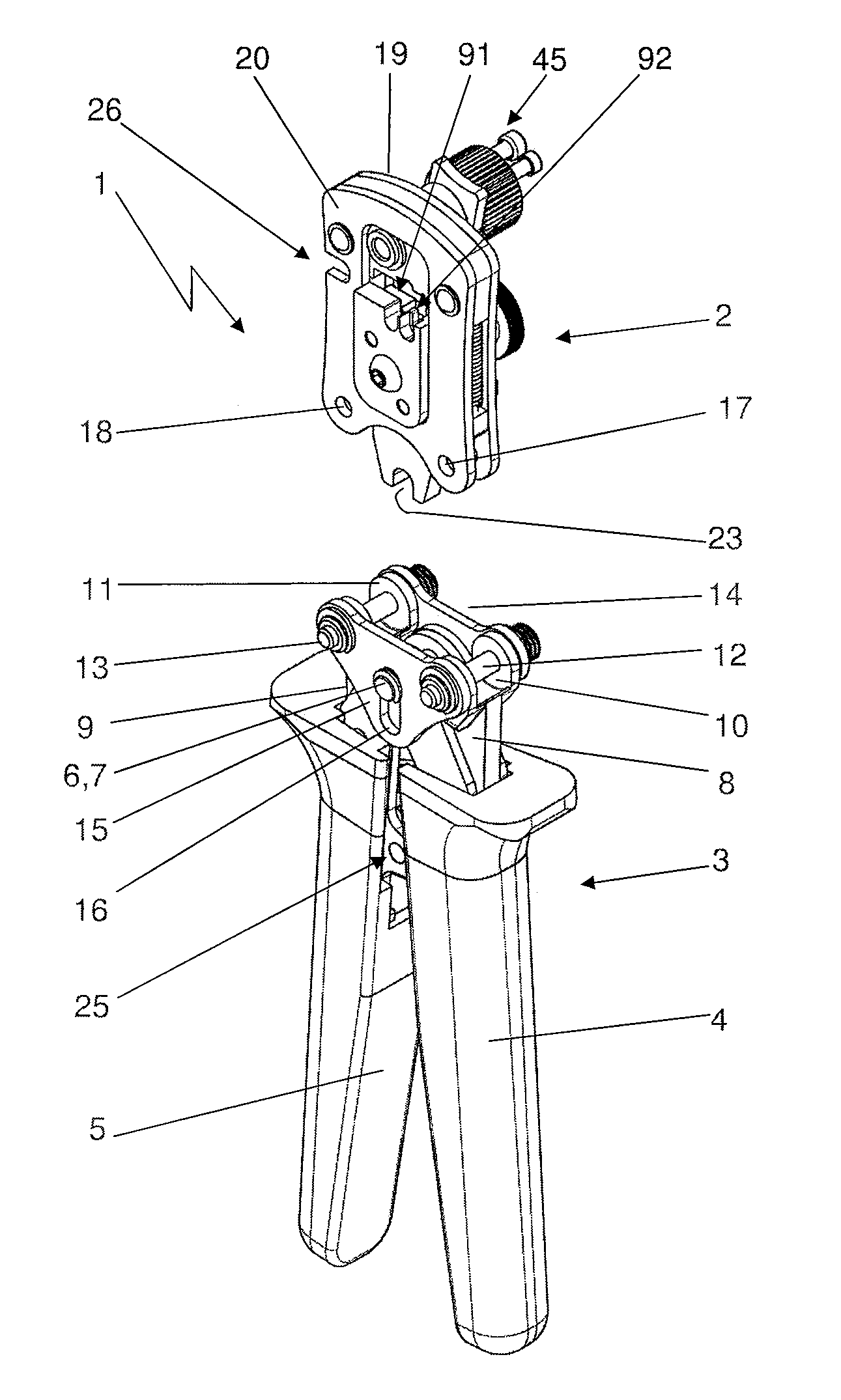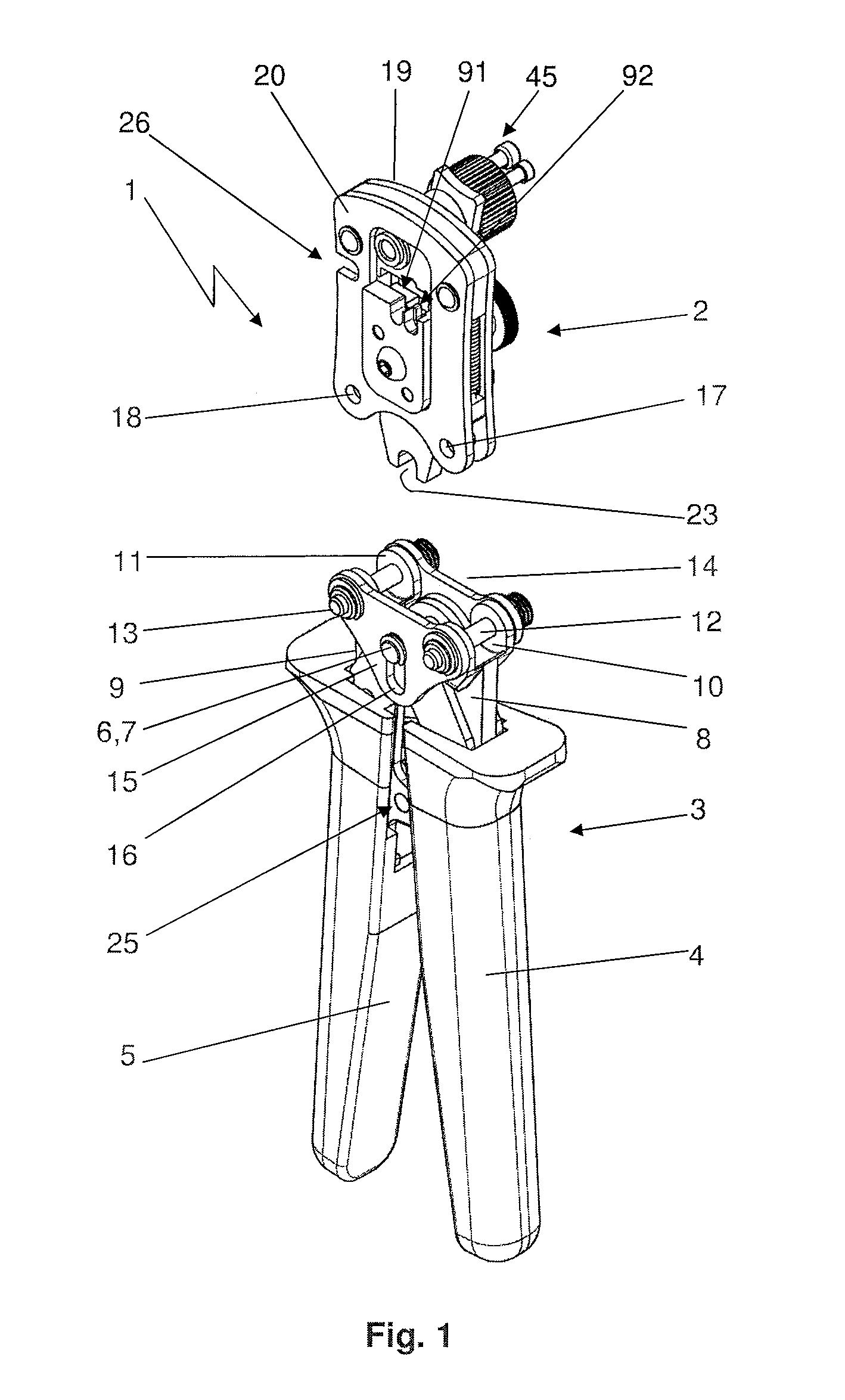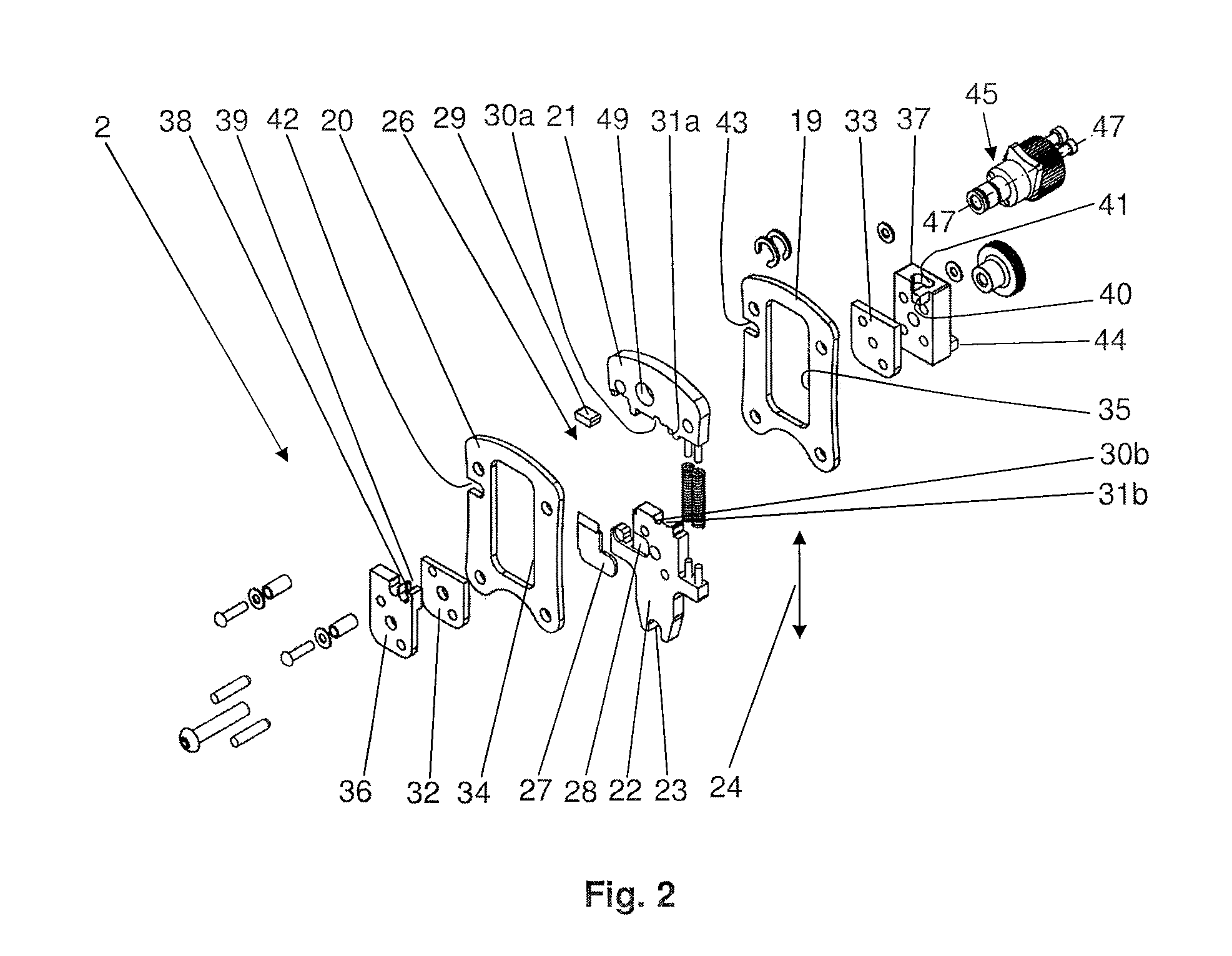Pliers
a technology of pliers and pliers, which is applied in the field of pliers, can solve the problems of inability to rotate, inability to do rotational movement, and inability to do drilling,
- Summary
- Abstract
- Description
- Claims
- Application Information
AI Technical Summary
Benefits of technology
Problems solved by technology
Method used
Image
Examples
Embodiment Construction
[0049]The embodiments of pliers shown in the figures are only examples for the type of pliers used, the kinematics used for producing the forces, the absolute and relative dimensions, the configuration of the cutting element, the position of the cutting element at the pliers and the linkage, the use and the type of the used automatic locking unit, the degrees of freedom of the movement of the head parts of the pliers, in particular the pivoting movement with the pivoting movement of the handles or a translational displacement activated by a pivoting movement of the handles, the configuration of the head part, the configuration of the built seat and the configuration of the cutting element itself. For giving only some examples for a variety of possible embodiments, the cutting element might be used in connection with a tool of the applicant according to the documents DE 40 23 337 C1, corresponding to U.S. Pat. No. 5,153,984 A; DE 44 27 553 A1; DE 100 56 900 C1, according to U.S. Pat....
PUM
| Property | Measurement | Unit |
|---|---|---|
| angle | aaaaa | aaaaa |
| drilling angle | aaaaa | aaaaa |
| translational degree of freedom | aaaaa | aaaaa |
Abstract
Description
Claims
Application Information
 Login to View More
Login to View More - R&D
- Intellectual Property
- Life Sciences
- Materials
- Tech Scout
- Unparalleled Data Quality
- Higher Quality Content
- 60% Fewer Hallucinations
Browse by: Latest US Patents, China's latest patents, Technical Efficacy Thesaurus, Application Domain, Technology Topic, Popular Technical Reports.
© 2025 PatSnap. All rights reserved.Legal|Privacy policy|Modern Slavery Act Transparency Statement|Sitemap|About US| Contact US: help@patsnap.com



